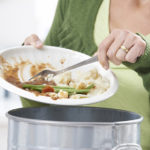Microwave ovens are a convenient modern appliance that can simplify cooking and make it more efficient. Understanding how to use a microwave safely and effectively is essential.
Here are some key considerations and guidelines for using a microwave:
1 Consult the Instruction Manual

Before using any new product, it’s always a good idea to read the instruction manual thoroughly. This will ensure you understand the safe operation of your microwave. The manual will provide essential information about the appliance, including part names, installation and usage instructions, troubleshooting tips, and perhaps even some tasty microwave-friendly recipes.
2 Exercise Caution When Plugging In

Microwaves typically consume a significant amount of power, ranging from 800-2000W. To prevent electrical hazards such as overloaded circuits or short circuits, avoid plugging too many electrical devices into the same outlet as your microwave.
3 Setting the Timer
- For mechanical microwaves, simply turn the timer knob to the desired setting.
- Digital microwaves may require you to input the desired time in minutes and seconds before starting.
- In some cases, you may need to press the “Cook/Start” button to activate the microwave.
4 Meal Ideas Perfect for the Microwave

- Reheat leftovers, such as soups, rice, or stir-fries, for a quick and convenient meal.
- Warm up your favorite drinks, like milk or coffee, to the perfect temperature.
- Bake potatoes or sweet potatoes for a healthy and filling snack.
- Pop some popcorn for a tasty treat.
- Cook instant noodles in a flash.
5 Tips for Optimal Microwave Use

- Avoid using the microwave for cooking dry foods with little to no water content. However, if you have a recipe specifically designed for microwave cooking, go for it!
- When cooking foods with low water content, place a cup of water in the microwave to prevent them from drying out or burning.
- Position softer foods in the center of the microwave and arrange thicker, denser foods around the edges for more even cooking.
- For convenience and energy efficiency, use containers made of paper, wood, ceramic, porcelain, or glass when cooking in the microwave.
- Keep metal objects out of the microwave to prevent electrical sparks and potential damage.
- Eggs should be avoided in the microwave due to the risk of rapid heating and potential explosions if left unattended for too long. The calcium in the shell can cause the egg whites and yolks to absorb microwave energy.
Following these tips will help you get the most out of your microwave while ensuring safe and efficient cooking. Always refer to your instruction manual for model-specific guidance. Happy microwaving and enjoy your culinary creations!
You may also like:
“The Humble Herring: A Nutritional Powerhouse Offering Omega-3 Rich Benefits for Just 20,000 VND per Kilo”
“In traditional Eastern medicine, tilapia is believed to have a sweet and neutral taste, free from any toxicity. This fish is considered especially beneficial for children who are underweight or anemic, as well as adults. With its mild flavor and tender texture, tilapia is a versatile and nutritious addition to any meal.”








































